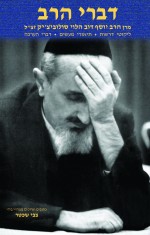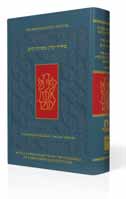Divrei HaRav/Koren Mesorat HaRav Siddur
 Divrei HaRav
Divrei HaRav
By Rabbi Herschel Schachter
Mesorah Commission of the
Orthodox Union
Rabbi Hershel Schachter is a brilliant Talmudic scholar, a leading halachic decisor and a highly respected rosh yeshivah and rosh kollel at Yeshiva University’s Rabbi Isaac Elchanan Theological Seminary (RIETS).
This accomplished scholar and beloved student of Rabbi Joseph B. Soloveitchik (“the Rav”) has devoted great effort to promoting his mentor’s Torah insights. More than fifteen years ago, as a tribute to his teacher, Rabbi Schachter published Nefesh HaRav, which contains topical presentations of the Rav’s halachic thought, an extensive collection of the Rav’s rulings and practices ordered on the Shulchan Aruch, and a compilation of his insights into the weekly Torah Reading. The book presents a stunning picture of the Rav’s halachic legacy. Each point, each ruling and insight, offers us an additional perspective of the Rav’s multifaceted character.
Seven years later, Rabbi Schachter published a sequel, MiPninei HaRav. Following the format of the previous volume, this book includes Yiddish summaries of some of the Rav’s lectures translated into Hebrew. These two volumes were enthusiastically received and adorn the bookshelves of thousands of the Rav’s students and admirers.
This year, Rabbi Schachter published a third volume, Divrei HaRav. The first part of Divrei HaRav is a collection of several of the Rav’s famous public addresses. The second is a continuation of the previous volumes, with explanations of the Rav’s halachic rulings and practices, following the order of the Shulchan Aruch. In the third part, Rabbi Schachter assembles additional accounts and descriptions of the Rav’s practices and rulings.
A fourth part includes Rabbi Schachter’s address on the Rav’s tenth yahrtzeit, in which he analyzes the Rav’s approach to issuing halachic rulings. In particular, Rabbi Schachter focuses on the meaning of various conflicting accounts of the Rav’s positions. A fifth part contains insights into the weekly Torah portion. The book concludes with an index for all three volumes.
The entire series is a service to the community, helping a new generation that did not have the privilege of experiencing the Rav in person learn from his profound genius and grow from his inspiring thoughts.
 Koren Mesorat HaRav Siddur
Koren Mesorat HaRav Siddur
OU Press /Koren Publishers Jerusalem
Prayer is a perplexing devotional act. How can frail and flawed man, imperfect flesh and blood, dare to ask anything of the Creator without first perfectly fulfilling one’s obligations? Why would God respond to the requests of a sinner, someone who has breached the covenant with the Almighty?
The Rav explained that, in truth, there is no logical basis for prayer. The only justification for prayer is historical precedent. We pray not because it is rational, but because we follow in the footsteps of our forebears. Only by following their example, by using the words and adhering to the model established by our Sages, are we justified in petitioning God for our needs.
It is, therefore, essential to understand not only the meaning of our prayers but their underlying concepts. The laws of prayer take on new meaning as we perceive them as not just technical regulations but as the profound structure through which we approach our Maker. In this sphere, the Rav’s conceptual approach to learning Torah and use of the “Brisker” method are particularly helpful. In lectures throughout the years, the Rav analyzed and dissected the themes of prayer and its procedures, revealing layers of depth and meaning in the familiar texts.
Rabbi Menachem Genack, chief executive officer of OU Kosher and general editor of OU Press, has just made an important stride in transferring some of these teachings of the Rav from memories and notes to the wider public. Shiurei HaRav on Milei DiBerachot, the fifth volume in the Shiurei HaRav series, is a treasure trove of the Rav’s insights into the laws of prayer. Rabbi Genack, devoted student of the Rav, summarizes the Rav’s Talmudic lectures on the topics of Shema, prayer, blessings and the Torah Reading.
Written in rabbinic Hebrew, the book takes students through lecture after lecture in classic “Brisker” style, dramatically capturing the give-and-take between apparently contradicting sources and the Rav’s brilliant flashes of insight that reconcile them. Each essay is an exhilarating journey toward greater understanding of the role of prayer in religious life.
Another milestone in the dissemination of the Rav’s thoughts on prayer is the forthcoming publication of the Koren Mesorat HaRav Siddur. This new edition of the siddur features an extensive commentary culled from the Rav’s writings and teachings on prayer and is further adorned by Rabbi Lord Jonathan Sacks’ acclaimed English translation and the esthetic beauty of the Koren siddurim. Profound, uplifting comments elevate the prayer service to a new level of meaning. Philosophical musings and halachic definitions shed light on the significance and structure of the prayers. Devotees of the Rav and satisfied users of the Koren Sacks Siddur should rejoice.
